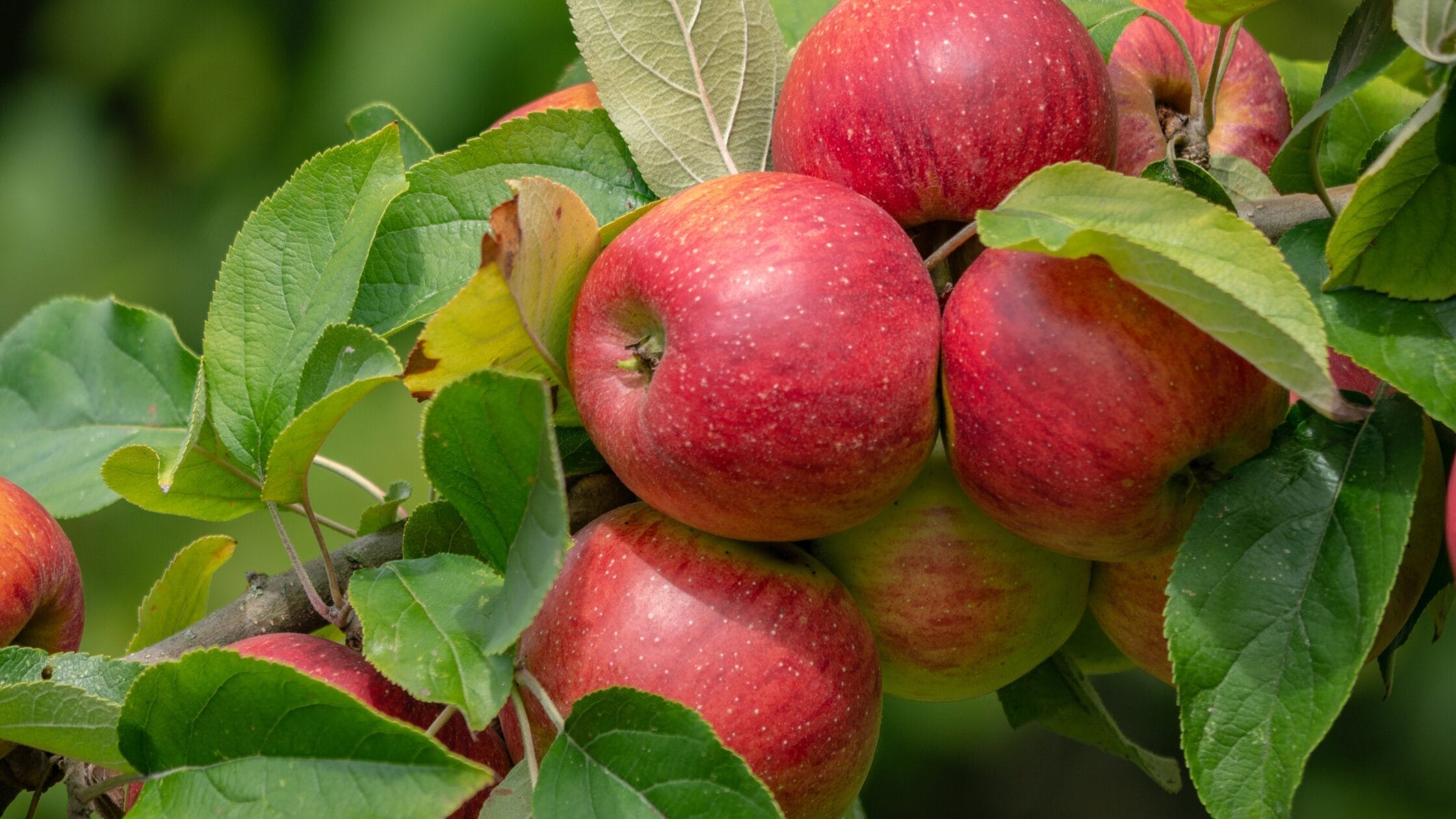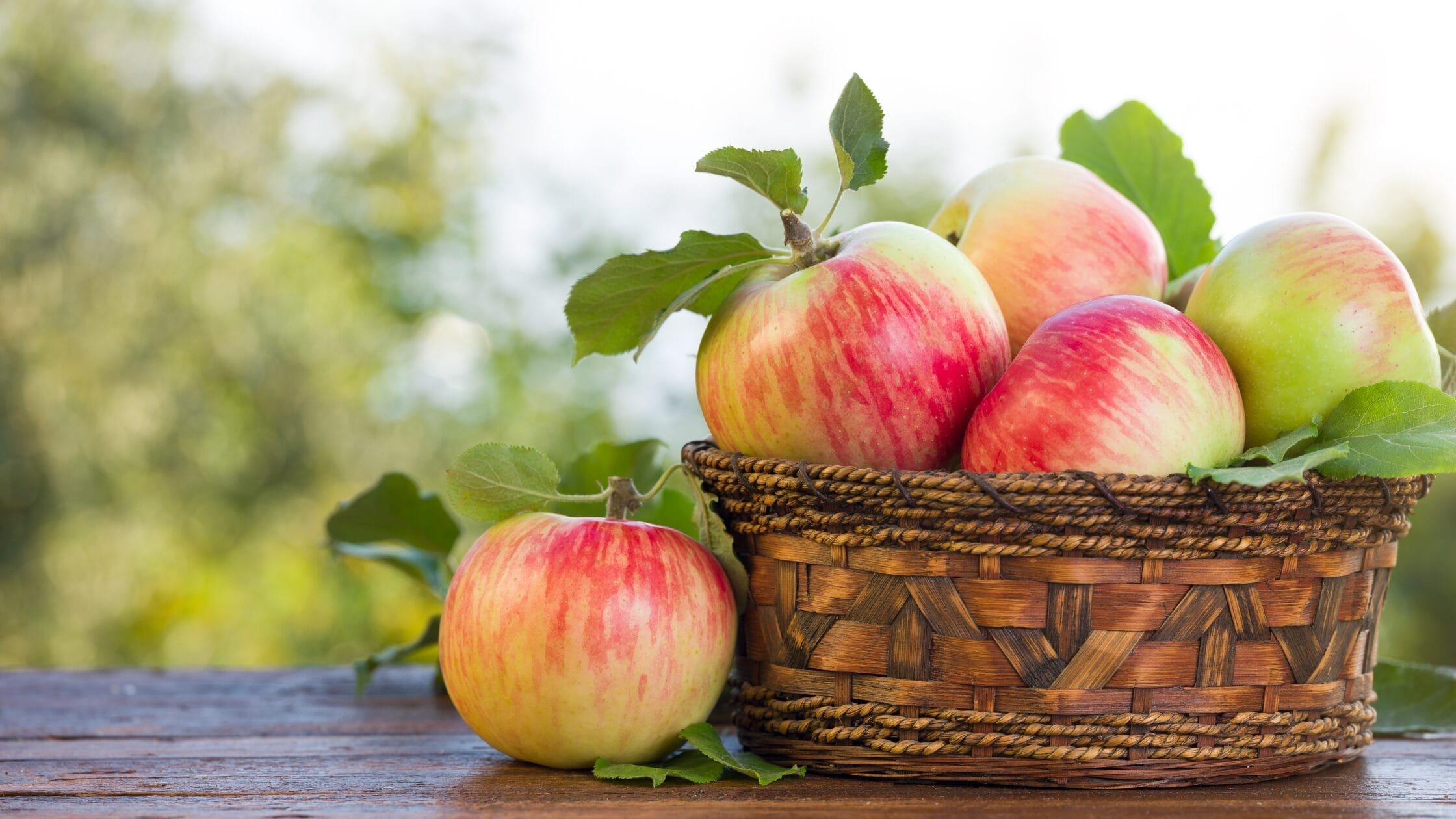Global Apple Production Overview
According to the Food and Agriculture Organisation (FAO) and other agricultural statistics, the global apple production stands at over 87 million metric tonnes (MT) annually. Apples are grown in more than 90 countries, but production is heavily concentrated in the top five, namely: China, USA, Turkey, India, and Russia.
According to FAO and USDA reports, global apple production is estimated at 87–90 million metric tonnes (MT) annually. The top five apple-producing countries are:
- China – ~45 million MT
- USA – ~5 million MT
- Turkey – ~4 million MT
- India – ~2.5 million MT
- Russia – ~1.7 million MT
Among these, China alone produces more than 45 million metric tonnes of apples annually, accounting for nearly 50–55% of global production.
These countries account for more than 75% of the world’s apple supply.
China: The Unrivalled Leader in Apple Production
1. Production Statistics
China’s apple output has steadily increased since the 1980s due to governmental support, research investment, and modernisation in agriculture. As per 2024 data:
- Total production: ~45–47 million MT
- Land under cultivation: Over 3 million hectares
- Yield per hectare: 18–20 tonnes (depending on region)
2. Major Apple-Growing Provinces
Apple cultivation in China is concentrated in northern and northwestern regions, where climatic conditions are ideal for apple orchards. Some of the top apple-producing provinces include:
- Shaanxi – The largest apple-growing province
- Shandong
- Henan
- Hebei
- Gansu
- Liaoning
Shaanxi alone contributes over 10 million MT, making it one of the most productive apple regions in the world.
3. Popular Varieties Grown in China
China has embraced both native and international apple varieties. Popular cultivars include:
- Fuji – The most dominant and widely grown apple variety in China.
- Qinguan – A local variety known for its good shelf life.
- Gala – Increasingly cultivated for exports.
- Red Delicious and Golden Delicious
The Fuji apple, originally from Japan, now makes up over 70% of China’s total apple production.

Why Does China Dominate Global Apple Production?
Several key factors contribute to China’s leadership in apple production:
1. Favourable Agro-Climatic Conditions:
A temperate climate with cold winters and warm summers is ideal for apple trees, as it facilitates flowering, fruit setting, and ripening, which are key factors in apple production, particularly in China.
2. Government Support
China has promoted apple cultivation as a means to alleviate rural poverty. Subsidies, training programs, and access to improved planting materials have played a significant role.
3. Labour Availability
The availability of cheap labour has enabled the maintenance of large orchards and manual harvesting, which are essential for apple farming.
4. Domestic Demand
China has a massive domestic market. Apples are among the most consumed fruits, making production economically viable.
5. Export Potential
China is also a major exporter of apples, especially to Southeast Asia, Russia, the Middle East, and increasingly to Africa.
Economic Impact and Employment in China
The apple industry in China is a significant contributor to rural employment and income. It provides:
- Employment for millions of farmers and seasonal labourers.
- Income source for over 10 million households, particularly in Shaanxi, Gansu, and Shandong.
- There is a strong linkage to agro-processing industries such as juice, dried fruit, and cider production.
The expansion of cold chain logistics and modern storage facilities has also added value to the supply chain, extending the shelf life and marketability of apples.
China’s Role in the Global Apple Trade
Despite being the largest producer, China is not the largest exporter. The reason is the high domestic consumption. However, China still ranks among the top five apple exporters, sending out over 1 million tonnes of fresh apples annually.
Top export destinations include:
- Vietnam
- Thailand
- Russia
- Philippines
- Bangladesh
China also exports a large quantity of apple juice concentrate, making it the largest exporter in this segment globally.
Sustainability and Future Prospects in China
China has been modernising its apple orchards to focus on:
- High-density planting
- Drip irrigation and fertigation systems
- Integrated pest management
- Post-harvest cold storage expansion
Additionally, there is a shift toward organic and premium apple production to cater to health-conscious consumers both domestically and internationally.

Countries’ Comparison with Varieties.
Let’s briefly see how China compares to other top apple producers:
| Country | Annual Production (MT) | Key Varieties |
| China | ~45 million | Fuji, Qinguan, Gala |
| USA | ~5 million | Red Delicious, Gala |
| Turkey | ~4 million | Starking, Golden |
| India | ~2.5 million | Red Delicious, Ambri |
| Russia | ~1.7 million | Antonovka, Sinap |
While countries like the USA and Turkey focus more on exports and premium varieties, China’s strength lies in volume, domestic consumption, and processing.
USA: Hold Global Position in Production, Innovation and Trade.
While many countries contribute to global apple production, China is by far the largest producer. However, the United States of America (USA) holds a significant position globally in terms of apple production, innovation, and trade.
Let’s explore the leading apple producers USA, a major player in the international apple market.
Top Apple-Growing States in the USA
Apple production in the US is highly concentrated in a few key states, mainly in the temperate north and northwest regions. The top-producing states include:
Washington – Accounts for ~65–70% of total US apple production.
New York is a traditional apple-growing state with many heritage orchards.
Michigan – Known for its rich soils and diverse apple varieties.
Pennsylvania
California
Virginia
Oregon
Total area under apple cultivation: ~135,000 hectares
Average yield: 35–40 tonnes/ha (higher than global average).
Popular Apple Varieties in the USA
The USA is home to some of the world’s most popular and market-driven apple varieties, grown for both domestic consumption and export. These include:
- Red Delicious – Once the most popular variety, known for its deep red colour.
- Gala – Now the most produced apple variety in the US.
- Granny Smith – A crisp, tart green apple used in both desserts and fresh eating.
- Fuji – Sweet, dense apple originally from Japan, widely grown in the US.
- Honeycrisp – A premium variety known for its crunch and sweetness.
- Golden Delicious – A mild-flavoured yellow apple used in baking and processing.
The US has also developed new high-value varieties like Cosmic Crisp, which are specifically bred for better storage and premium pricing.
Employment and Economic Impact in USA.
Apple farming is a primary agricultural sector in the USA, especially in Washington State, where the industry contributes billions of dollars to the local economy. The industry supports:
- Over 60,000 direct jobs, including orchard workers, harvesters, sorters, and packers.
- Tens of thousands of indirect jobs in transportation, logistics, research, and retail.
- A multi-billion-dollar value chain, including fresh apples, cider, sauces, and dried apple products.
Washington’s apple industry alone contributes over $7 billion annually to the state economy.
USA in the Global Apple Trade.
Unlike China, which consumes a significant portion of its production, the USA is a major apple exporter, consistently ranking in the top two apple exporters globally.
Annual Apple Exports: ~850,000–1,000,000 MT
Export Value: ~$1.2–1.4 billion
Top Export Destinations:
- Mexico
- Canada
- India
- Taiwan
- Vietnam
- United Arab Emirates
Washington apples are particularly sought after in global markets due to their quality, appearance, and extended shelf life.
Sustainability and Technology
The US apple industry is highly advanced in terms of mechanisation, integrated pest management (IPM), and sustainable farming practices. Features include:
- High-density orchards using dwarf rootstocks
- Mechanical harvest aids
- Cold chain logistics for exports
- Research institutions (e.g., Washington State University) are working on new pest-resistant and climate-resilient varieties.
Comparison: China vs USA Apple Production
| Feature | China | USA |
| Production Volume | ~45 million MT | ~5 million MT |
| Leading Region | Shaanxi Province | Washington State |
| Dominant Variety | Fuji | Gala |
| Export Focus | Apple Juice, Fuji Apples | Fresh Apples (Gala, Fuji) |
| Average Yield per Hectare | ~18–20 tonnes/ha | ~35–40 tonnes/ha |
| Use of Technology | Improving | Highly Advanced |
| Domestic Consumption | Very High | Moderate |
FAQs: Apple Production Around the World
Q1: Which Country consumes the most apples?
China also tops the list of apple consumption, with an average annual per capita consumption of 15–20 kg.
Q2: Are Chinese apples safe and of good quality?
Yes. Many orchards in China follow international GAP (Good Agricultural Practices), and Chinese apples meet quality standards for exports.
Q3: What is the most exported apple variety from China?
Fuji apples are the most exported due to their crisp texture and long shelf life.
Q4: What is the most grown apple in the USA?
Gala apples have surpassed Red Delicious as the most grown and sold apple in the US.
Q5: Why is Washington State ideal for apple farming?
Washington offers a perfect climate — warm days, cool nights, and low humidity — which promotes colour development and reduces disease pressure.
Q6: Is the USA self-sufficient in apple production?
Yes. The USA is not only self-sufficient but also an exporter of apples to more than 60 countries worldwide.
Q7: Are American apples GMO?
No, none of the apples commercially grown in the USA are genetically modified (GMO), although research on biotech apples exists.
Q8: Is India self-sufficient in apples?
India produces a fair amount of apples, mainly in Himachal Pradesh and Jammu & Kashmir, but still imports apples from China, Turkey, and the USA.
Final Thoughts: China Leads in Quantity, USA Leads in Quality
While China dominates in sheer volume, the USA is a global leader in quality, export diversity, and apple innovation. The American apple industry exemplifies modern horticulture through advanced farming techniques, sustainability, and robust international trade.
As consumer preferences evolve and global demand for premium fruits rises, both China and the USA are poised to shape the future of the worldwide apple market in different but complementary ways.
